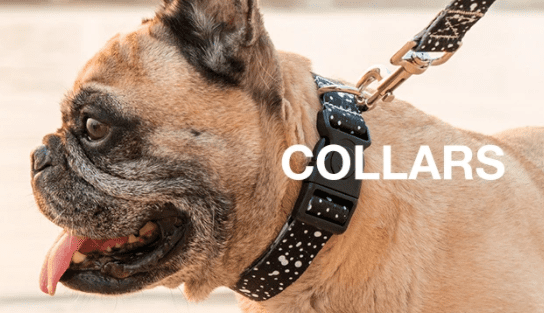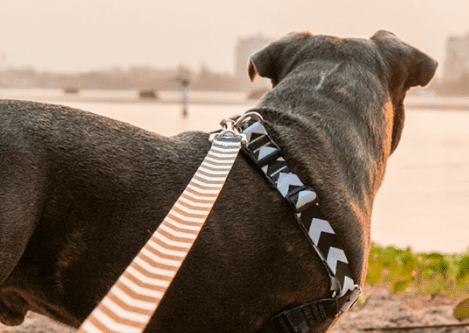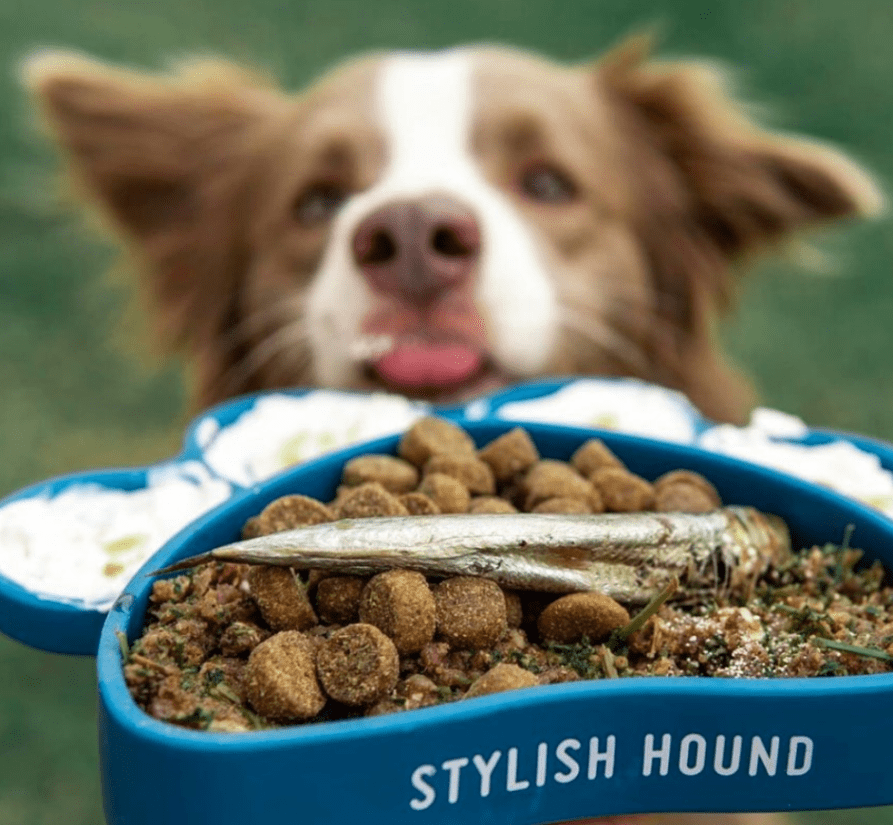If you have a dog—or a child, for that matter—you’ll know that an inevitable string of material possessions is to follow them. Neither canines nor human children are a minimalist project, and that’s just part of the (pet) parenthood parcel. If you have a dog, you may well want to spoil them, but there are some base necessities they’ll need foremost for happy, active daily living. Read on for your essential checklist of must-have canine accessories. And if you’re lacking any of the below, you’d better whip out that credit card!
- Food and water
Food and water are among the building blocks of survival. They form a solid portion of the biological drives listed at the base of Maslow’s hierarchy of needs. Now, obviously, food and water are not ‘items’ per se—in fact, they’re two separate list items placed under one category. In terms of this post’s item count and literal interpretation, we have already cheated! Nevertheless, one cannot deny the fundamental importance of food and water. Surely you can’t blame us for including them!
Water—which, again, we reiterate: not an actual item—is easy to obtain. Food is the stuff you’ll want to deliberate over. When choosing a dog food, avoid generalist labels like ‘meat’ and seek specifics such as ‘chicken’ or ‘beef’. Purchasing the former over the latter is the equivalent of buying dim sims and chicken nuggets instead of fresh meat. In the same vein, avoid dog foods that list ‘byproducts’ among the ingredients. Similar to soy protein isolate, dog food byproducts are a lower-quality source of protein. You would receive far higher nutritional value from consuming the whole soybean—or the whole meat product. Also, you can prefer Dog Treats that are best for your dog and make them happy.
Contrary to common misconception, dogs are omnivorous rather than carnivorous. Ergo, dog food containing whole foods—such as grains, fruits, and vegetables—is always beneficial as it packs the extra vitamins, minerals, and antioxidants. Different dog breeds will have different nutritional requirements, so it always pays to check the macronutrient breakdown of each dog food. Speak to your vet if you’re feeling unsure.
- Food and water receptacles
Now that we’ve established the dos and don’ts of dog food, we’ll need receptacles in which to serve Fido’s refreshments. You should feed your dog at regular intervals, as well as top up their water bowl throughout the day. This negates the need for human intervention, granting pets their own autonomy. All pets should be at liberty to replenish their water stores whenever thirst strikes!
- Collar and identification
If you think microchips are enough, think again. Whilst microchips are a convenient backup, all domestic doggos should have a collar with visible identification. Why? Well, for starters, a collar is an immediate tell that a Stylish Hound has a home to go to. Should your doggo stray from home—God forbid—they would be less likely to be mistaken for a stray. And because they would be donning the mark of domestication, a stranger would be a) more likely to approach them and b) less likely to turn them into the horrendous pound. Visible identification also cuts out the council middleman. If your kind stranger can see your phone number dangling from your doggo’s neck, it would be much easier for them to call you directly than to contact the council to decipher details from the microchip.

And, of course, a collar allows you to connect a leash or harness for the daily walk. We would recommend investing in a dog harness to prevent a) pulling behaviours and b) choking.
- Pillow/bed/beanbag
Everyone loves resting on the couch in their downtime. When Doggo needs their downtime, they’ll want a cosy place to rest! We recommend a size-appropriate pillow, or a dog bed, or a beanbag. So long as it’s doggo-accessible and appropriate for your pooch’s size, there should be no issues! You may also want to consider if this could double as your dog’s place of sleep.
- Dog first-aid kit
First-aid kits are like fire extinguishers: you hope you’ll never have to use one, but you’ll be so grateful for it if the worst should happen. Dogs are adventurous, so should they take a misstep on a walk—or somehow hurt themselves (again, God forbid)—a dog-specific first-aid kit may be just be the right prescription. You should always keep one handy, especially if you and Doggo are travelling far from home.
- Treats
Like humans, dogs adore treats. Remember in primary school when the teacher would say you could have a Mars Bar if you helped tidy the classroom? Well, this same operant conditioning principle is in play throughout dog training. Giving treats is a positive reinforcement strategy that, when done correctly, encourages favourable behaviours. Dogs are motivated by their stomachs, so you know they’ll work hard for their rewards. When it comes to dog training, you could even say that giving treats works a treat!

You needn’t restrict treat giving to training sessions. You can also give treats because your dog is such a good boi. He no doubt is. Just be sure to associate treats with positive behaviors like at this site. Never give a dog a treat when they’ve behaved poorly.
- Leash and harness
All responsible dog owners should own leashes. These are essential when walking your dog, especially in non-rural locations, which almost always have clear leash laws. Wearing a leash goes against every canine instinct—which, when you think about it, is even more reason to attach one. Leashes keep your dog in check and make it clear that you are the boss. They also ensure the safety of all involved throughout the walk—including your dog, yourself, and any other humans or animals you may encounter.

Harnesses, whilst not enforceable by law, are strongly recommended. There are different types of harnesses available, such as no-pull harnesses built specifically for training, and chest plate variants. Secure your dog with one of these for a) greater control, b) reduced pulling behaviours, and c) a walk without the risk of choking. If you and your canine travel by car, you’ll need a harness-and-doggy-seat-belt combination in order to properly restrain your pooch.
- Dog toys
Dogs are overgrown toddlers, so it follows that they’ll want to play with toys. Not unlike human toddler toys, dog toys actually aid in wellbeing and development. Chew toys, in particular, appeal to a dog’s second-favourite way of nutting out the world: putting their mouth all over everything. It sounds gross, but this is a form of canine mental stimulation on par with the human tendency to read a book. It’s also a source of comfort and stress-relief for dogs.

If you want a healthy, happy dog, be sure to invest in some high-quality, durable, non-toxic chew toys. In the interests of canine safety, do NOT invest in cheap Kmart or dollar-store toys. If you’re after some canine-human bonding time, invest in toys for fetch or for playing tug-of-war. Soft toys are not recommended for dogs whose bite may be worse than their bark.
And that about wraps it up
This is not necessarily an exhaustive list, but these eight items—and, yes; due to the plurals and question as to whether some of these qualify as actual items, we have decided that these are, indeed, list items—are a strong baseline for canine happiness. Get all of these things and you have formed the foundation for one happy pooch. Dogs are a lot of work, and they will need a lot of stuff, but the exchange is a whole lot of love. And, in the end, that’s why we pet parent. So, if you have consumed this list and taken note of some gaps, you should rectify that pronto. These items are one big bundle of joy for your furry bundle of joy.
My name is Sardar Ayaz a professional content writer and SEO expert having Proven record of excellent writing demonstrated in a professional portfolio Impeccable grasp of the English language, including idioms and current trends in slang and expressions. I have ability to work independently with little or no daily supervision with strong interpersonal skills and willingness to communicate with clients, colleagues, and management.
I can produce well-researched content for publication online and in print, organize writing schedules to complete drafts of content or finished projects within deadlines. I have 12 years’ experience to develop related content for multiple platforms, such as websites, email marketing, product descriptions, videos, and blogs.
I use search engine optimization (SEO) strategies in writing to maximize the online visibility of a website in search results
